| "Descrizione" by A_Partyns (12948 pt) | 2023-Dec-11 18:47 |
Review Consensus: 10 Rating: 10 Number of users: 1
| Evaluation | N. Experts | Evaluation | N. Experts |
|---|---|---|---|
| 1 | 6 | ||
| 2 | 7 | ||
| 3 | 8 | ||
| 4 | 9 | ||
| 5 | 10 |
E504 (Magnesium Carbonates) is a chemical compound, magnesium salt of carbonic acid and is formed from hydrotalcite material.
The name describes the structure of the molecule:
- Magnesium refers to magnesium, a chemical element. Magnesium is known for its health benefits and chemical reactivity.
- Carbonates indicates that the compound is a salt or ester of carbonic acid. Magnesium carbonates can come in different forms, such as basic magnesium carbonate or hydrated magnesium carbonate.
Raw Materials and Their Functions
Hydrotalcite. A mineral material that serves as a source for the production of magnesium carbonates. Hydrotalcite is composed of layers of magnesium and aluminum hydroxides intercalated with carbonate anions.
Industrial Chemical Synthesis of Magnesium Carbonates
- Thermal Treatment of hydrotalcite, during which water and carbon dioxide are released, leaving behind magnesium carbonates.
- Reaction Control. The thermal treatment is monitored to ensure it occurs correctly and the final product has the desired properties.
- Purification. After thermal treatment, magnesium carbonates are purified to remove impurities and by-products.
- Quality Control. The purified magnesium carbonates undergo quality checks to ensure they meet the required standards. After quality control, they are packaged for use in food, pharmaceutical, and cosmetic products, where they utilize their antacid and absorbent properties.
Industrially, it appears in the form of a white powder.
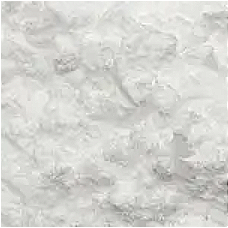
What it is used for and where
Magnesium Carbonates is used in a variety of sectors, including pharmaceuticals, cosmetics, and food products. In the pharmaceutical industry, magnesium carbonates are employed as antacids and laxatives. In the cosmetic industry, they are used as opacifying agents and absorbents in powders and other skincare products. Additionally, they are used in the food industry as additives and acidity regulators.
Food
Magnesium Carbonates is an anti-caking agent on the European food additives list with the number E504 and used in cheeses, wines etc. and in the Colour Index International as 77713, dye.
Cosmetics
Magnesium Carbonates is a restricted ingredient as IV/139, a Relevant Item in the Annexes of the European Cosmetics Regulation 1223/2009
Absorbent. Absorbs substances dispersed or dissolved in aqueous solutions, water/oil, oil/water..
Binder agent. Ingredient that is used in cosmetic, food and pharmaceutical products as an anti-caking agent with the function of making the product in which it is incorporated silky, compact and homogenous. The binder, either natural such as mucilage, gums and starches or chemical, may be in the form of a powder or liquid.
Opacifying agent. This additive is inserted into formulations that may be translucent or transparent to make them opaque and less permeable to light.
Colorant. Ingredient whose primary function is to colour the solution in which it is inserted in a temporary, semi-permanent or permanent manner, either alone or in the presence of complementary components added for colouration.
Medical
Magnesium carbonate is used against heartburn or indigestion. Unlike other magnesium salts (aspartate, citrate, gluconate, lactate, orotate, pyruvate) that are easily absorbed in the body, magnesium carbonate is slower. It is used as an effective treatment in hemodialysis patients with calcium-phosphoric problems (1) with some warning (3). In the human body it helps the development of muscles and bones.
Although positive long-term effects on coronary artery calcification have been found (2), it is believed that these studies still need to be further investigated to ensure that the product is effective.
In inappropriate doses it can cause diarrhea and stomach ache.
Magnesium salts are used in treatments for preserving the integrity of the blood system, urine pH, etc.
- aspartate
- citrate
- gluconate
- lactate
- orotate
- pyruvate
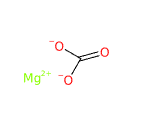 | 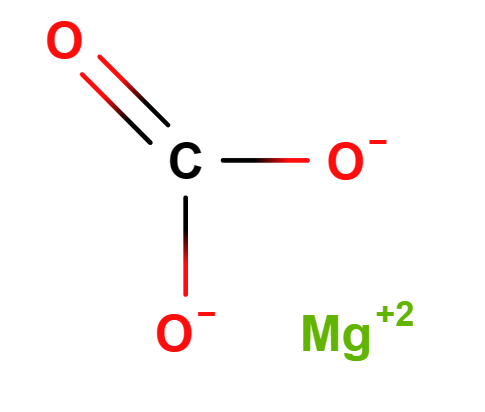 |
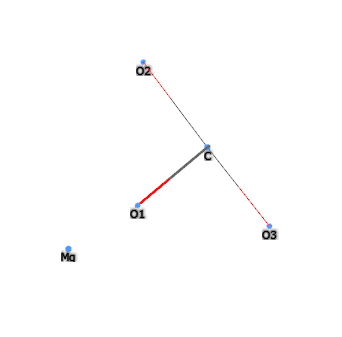 | 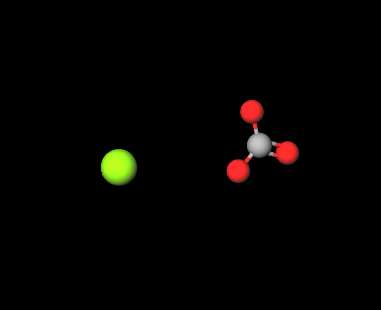 |
The most relevant studies on this ingredient have been selected with a summary of their contents:
Magnesium carbonate studies
- Molecular Formula: CMgO3 MgCO3
- Linear Formula: MgCO3 · x H2O
- Molecular Weight: 84.313 g/mol
- CAS: 546-93-0 7757-69-9 13717-00-5 13717-00-5 23389-33-5
- EC Number: 208-915-9 231-817-2 604-004-9
- UNIII: 0IHC698356
Synonyms:
- Magnesium carbonate hydrate
- magnesium carbonate (1:1) hydrate
- carbonic acid, magnesium salt (1:1), hydrate
- magnesium carbonate anhydrous
- CI 77713
- E504
- UNII-0IHC698356
- Caswell No. 530
- Magnesite dust
- Hydromagnesite
- Stan-mag magnesium carbonate
- nesquehonite
References_______________________________________________________________________
(1) Zwiech R, Dryja P, Łacina D, Króliczak V, Chrul S, Kacprzyk F. The influence of short-term magnesium carbonate treatment on calcium-phosphorus balance in dialysis patients. Wiad Lek. 2011;64(1):9-14.
Spiegel DM, Farmer B, Smits G, Chonchol M. Magnesium carbonate is an effective phosphate binder for chronic hemodialysis patients: a pilot study. J Ren Nutr. 2007 Nov;17(6):416-22. doi: 10.1053/j.jrn.2007.08.005.
(2) Spiegel DM, Farmer B. Long-term effects of magnesium carbonate on coronary artery calcification and bone mineral density in hemodialysis patients: a pilot study. Hemodial Int. 2009 Oct;13(4):453-9. doi: 10.1111/j.1542-4758.2009.00364.x. Epub 2009 May 12.
(3) Delmez JA, Kelber J, Norword KY, Giles KS, Slatopolsky E. Magnesium carbonate as a phosphorus binder: a prospective, controlled, crossover study. Kidney Int. 1996 Jan;49(1):163-7. doi: 10.1038/ki.1996.22.
| Evaluate |

